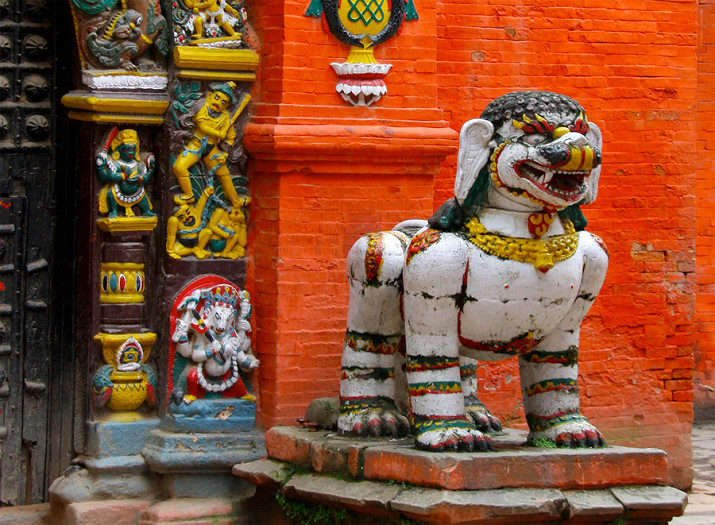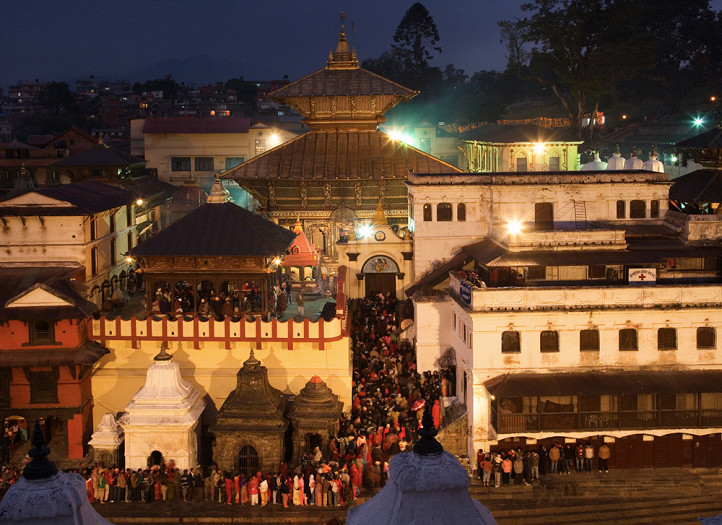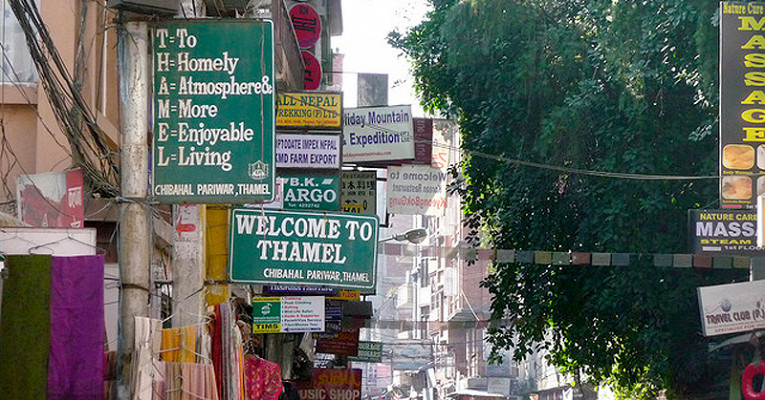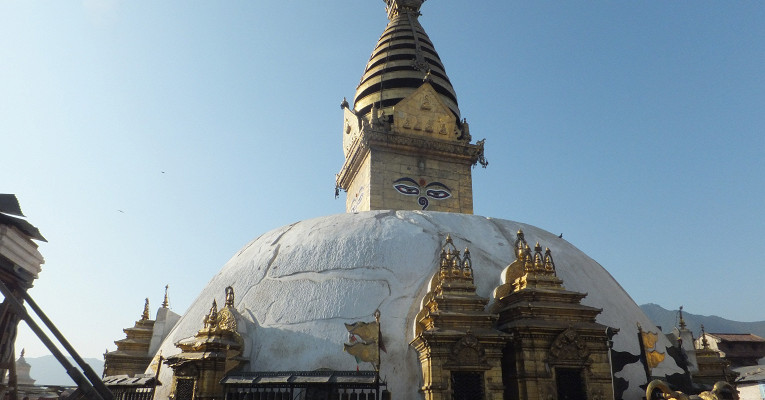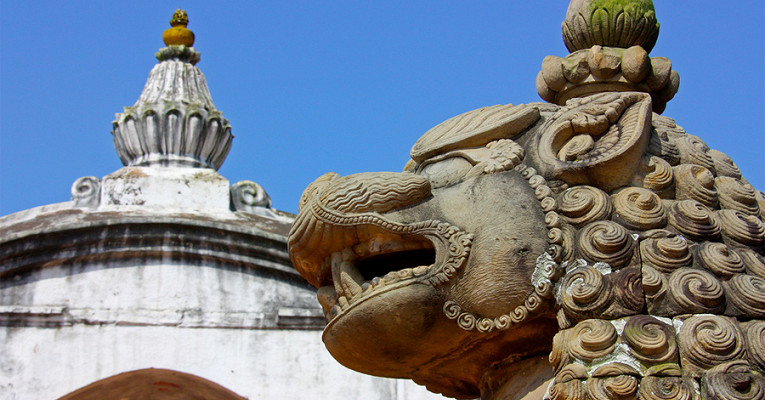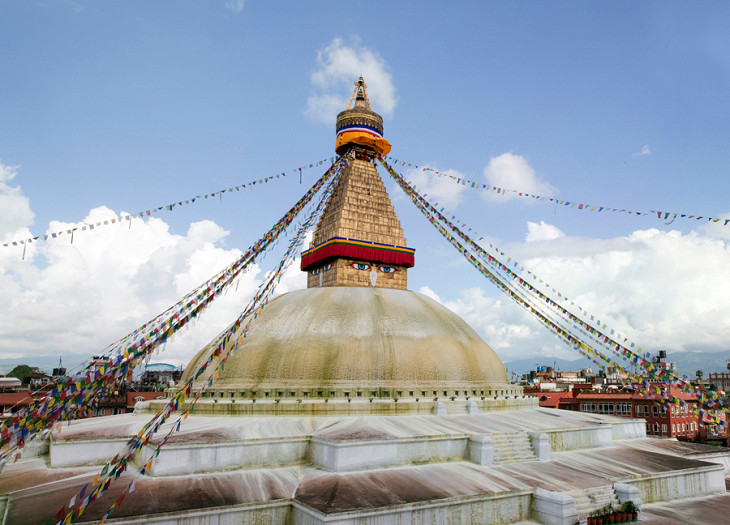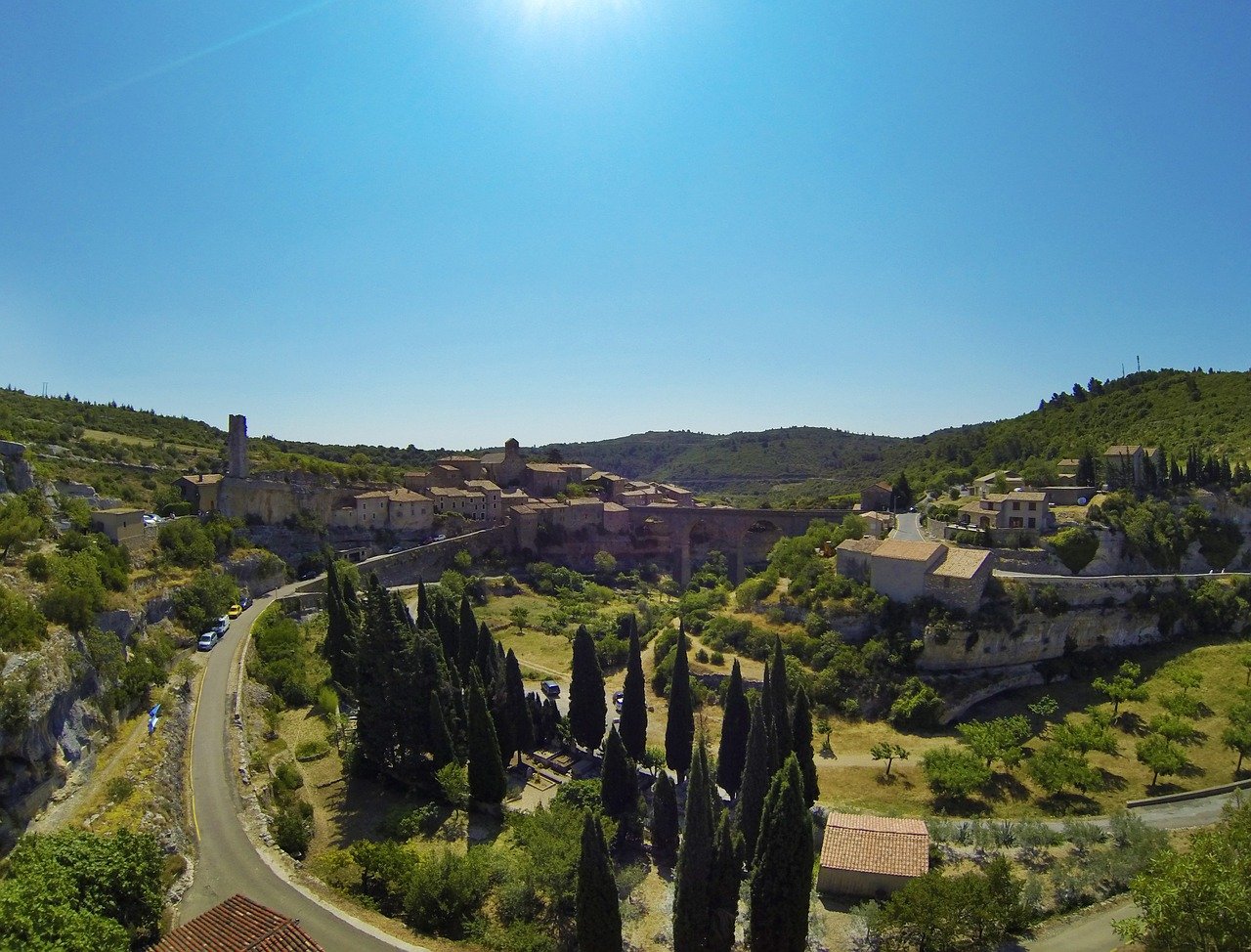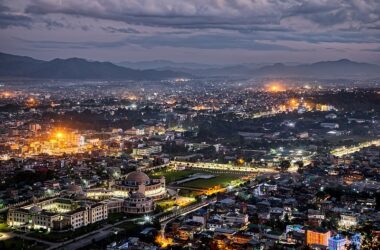Spread out in a valley between the mountains, Kathmandu makes a lasting impression. The old part of it seems to have frozen in the Middle Ages. Local beauties rustle with bright silks of saris, pilgrims sort out rosaries and twirl prayer drums, naked wandering ascetics sit motionless on the steps of temples, and monkeys indifferent to religion gallop along with sacred stupas and stone altars. In the center of Kathmandu, grandiose palaces rise, and in poor areas, there are queues to the wells – there is still no running water. On the streets of the city, there are endless traffic jams of thousands of motorcyclists and painted Indian Tata trucks, smog, and dust. Places to visit in Kathmandu

Places to visit in Kathmandu
It is not clear what is primary – the poverty of the Nepalese or their religiosity. Temples or altars everywhere help the poor to come to terms with the bleak reality. Here they push fruit porridge into the mouth of a statue of a demon-like Mahakala, rub their foreheads against a stone phallus-lingam, wait for hours for a little girl, the incarnate goddess Kumari, to look out of the window of their mansion on Durbar Square. Buddhists and Hindus often pray in the same temples, it is not very easy to understand where one religion ends and another begins. In the Pashupatinath temple center, right in the center of the city, the dead are burned and the charred remains are thrown into the river.
Downstream, locals fish for coals in the hope of finding gold rings or teeth. The sacred stupas of Bodnath and Swayambhunath are watching over the follies and chaos of Kathmandu with huge painted eyes, Most foreigners (with average or below average budgets) live in the Thamel region, a tourist ghetto with hundreds of guest houses, cafes, and German pastry shops, clubs, and discos. Here you can find a travel companion, look for work as a volunteer, buy trekking equipment, or sell an unnecessary, leaky sleeping bag at a flea market.
In the Kathmandu Valley, in addition to the capital itself, you should definitely see the ancient cities of Patan and Bhaktapur – no less sacred, but much calmer and quieter.
Places to visit in Kathmandu
Pashupatinath Temple
In walking distance from the Buddhist stupa Bodnath, there is another religious shrine, this time a Hindu one – the Pashupatinath temple. The temple complex occupies both banks of the Bagmati River, sacred for Hindus, which originates in the mountains and flows into the Ganges.

Places to visit in Kathmandu
The temple complex is dedicated to Shiva in the guise of Pashupati, the king of animals. The main temple, built in the 19th century, is considered a masterpiece of Hindu architecture. Thousands of Hindu pilgrims from Nepal and India come here every day. Also on the territory of the temple complex, there is a house awaiting death. This is the place where old people come to live out their last days; they know the exact date of their death from astrologers.
The bodies of the deceased are burned on funeral pyres on the bank of Bagmati. The correct execution of the funeral ritual determines whether the next reincarnation will be successful. Those who do not profess Hinduism are not allowed into the forbidden territories of the crematorium and temples, but they can freely observe what is happening from the east side of the river.
Thamel (Kathmandu)
Life here does not stop – the music of Buddhist mantras turned into pop hits roars from the speakers, exotic dishes are cooked in cafes and restaurants, wooden elephants, bronze Buddhas, and Tibetan wands made of the tibia (as the sellers say, human!) Bone is exhibited in souvenir shops. Civilized travelers, ragged hippies, drug dealers with shifty eyes, tourist trash sellers, and hotel barkers roam the streets.

Places to visit in Kathmandu
Motorcyclists and rickshaws scurry about, or even a small truck, will drive into these narrow streets to get stuck here and announce the driver’s sorrowful screams to the surrounding area. Most of the cheap hotels, guesthouses, cafes, and restaurants are located here. And if you are not too spoiled tourist, living only in 5-star hotels, then there is no need to think about where to stay, go to Thamel, and there you will figure it out.
Swayambhunath
365 steps leading to the shrine – the Swayambhunath Buddhist temple complex – is located three kilometers west of Thamel on the top of Swayambu Hill. The name means “who created himself out of nothing a million years ago for all and forever.”

Places to visit in Kathmandu
365 steps lead to the top of the hill, and a huge white stupa, built in the 3rd century BC, rises above. e. later rebuilt in the VIII-IX centuries. It is believed that the stupa is located in the most favorable place in the valley from the point of view of astral forces, therefore the mantras and prayers read here have “13 billion times” more power than those spoken anywhere else. The base of the spire is decorated with the all-seeing eyes of the Buddha on four sides.
Swayambhunath is sometimes called the “monkey temple” because of the large number of macaques that live here. Macaques are not dangerous, but teasing them or trying to feed them is also not worth it – they can bite.
Kathmandu Durbar Square
On a small territory, consisting of three adjacent squares, the main Hindu shrines, several palaces, temples, pagodas, and other architectural monuments are concentrated. Most of the buildings in Durbar Square date back to the 17th-18th centuries, but many of them were rebuilt after the strong earthquake of 1934. Here you can spend a whole day watching the life of the townspeople and conducting unusual religious ceremonies. The entrance to the square is paid for, and the ticket is issued for a day.

Places to visit in Kathmandu
Hanuman Dhoka Palace (XV-XVIII) is an intricate web of randomly connected courtyards, pagodas, tombs, numerous columns, and statues. At the four corners of the palace are towers made by artisans from the Kathmandu Valley. The tallest of them, the Bazantapur Tower, can be climbed and gazed at the rooftops of the old city from above. The main entrance to the palace, its golden gate, is guarded by the god Hanuman (1672) – more precisely, his statue: this ape-like deity gave the name to the palace. There are several museums inside, where you can get acquainted with the history of the palace and take a look at the royal collections. The Nasal Chowk courtyard is used for the coronation of rulers, and the Mul Chowk courtyard is used for sacrifices during the Dasain festival.
Opposite the entrance to the palace is the octagonal Krishna Balaram Mandir (entrance 250 rupees 10.30-16.00, Sun 10.30-14.00). Nearby is the Kumari Ghar temple – the residence of the living goddess Kumari. It is believed that Kumari is the embodiment of the goddess Taleju, an angry incarnation of the warlike Hindu goddess Durga. If you happen to see Kumari, then you will be lucky in everything. Therefore, some Nepalese sometimes stand in front of the window for days on end, hoping that the girl will look out of the window. Kumari appears in public 13 times a year on major holidays.
LIVING GODDESS
A 3-5-year-old girl from the Newar caste of Shakya (from which Prince Siddhartha Gautama – Buddha came) can become a Kumari. It is believed that Kumari should have 32 signs of perfection: a body like a banyan tree trunk, a lioness’s chest, a duck’s voice, etc. In practice, it is enough that she has no flaws. Kumari lives in a palace and performs divine duties (communicates with pilgrims) until she is defiled by the first blood – primarily menstrual blood, but the blood from a cut becomes a sufficient reason for the priests to start looking for another Kumari. When “the spirit of the goddess – the energy of Durga – leaves the girl,” she becomes a mere mortal with a decent $ 80 pension by Nepalese standards and finally gets the right to live an ordinary life: walk the earth, make friends with other girls, go to school.
Next to the Kumari temple-palace, where the goddess Durga is always invisible, is the Jagannath temple with erotic carvings.
HANUMAN IN SIBERIA
There is a theory asserting that on the territory of the small Siberian village of Okunevo there was once a cradle of Indo-Aryans, some of them moved to the south of Asia, to the regions of Hindustan. Some scholars dream of finding here, among other things, the ancient temple of Hanuman. However, these theories have not yet received any significant support in scientific circles.
Bhaktapur
Of all the cities in the Kathmandu Valley, Bhaktapur is the best preserved. Its ancient red-brick temples, carved wooden roofs, and shutters attract tourists from all over the world. At the same time, Bhaktapur is not some kind of museum there, but quite a living city. Its residents do not pay attention to the fact that they live in the middle of a “World Heritage Site”, but calmly dry pots in city squares or sort outcrops harvested from nearby fields.

Places to visit in Kathmandu
You can stay at the Shiva Guesthouse on Durbar Square, and dine at the Layaku restaurant, right on the roof of the house with a beautiful view of the palace.
The cost of a taxi to Bhaktapur is about 700 rupees, a bus for local people can take you for 20-25 rupees. From Kathmandu, the bus departs from the corner of Thundikel and Bagh Bazar Street.
Boudhanath
The largest stupa in Nepal, Boudhanath, is located 10 km northeast of the center of Kathmandu. The stupa was built in the 3rd century on a trade route connecting Lhasa with the capital of Nepal. Here prayed those who set foot on the dangerous path through the Himalayas and those who passed it safely.

Places to visit in Kathmandu
The base of the stupa has the shape of a three-level mandala and symbolizes the earth. The water sign corresponds to the domed part. The spire rising above the dome is fire, and its 13 steps symbolize the stages of liberation from samsara, the cycle of endless rebirths. The umbrella mounted on the spire is air. The end of the entire complex design is the tip that denotes ether. From the square base of the spire, the “all-seeing eyes of Buddha” look here in the four cardinal directions.
Around the stupa, located in a residential area on the plain, several dozen monasteries have been built, representing almost all the traditions and trends of Tibetan Buddhism. Here you can look for information about meditation courses or just watch pilgrims – some of them look no less exotic than the Bodnath monks.





